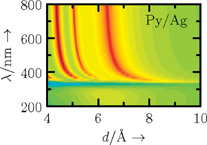Surface enhanced Raman scattering (SERS) uses noble metal substrates to enhance the inherently weak Raman signal from analytes. In some cases, the enhancement stems from two different mechanisms: a physical enhancement that comes from excitation of the metal surface plasmons and a chemical enhancement arising from charge transfer between the metal surface and an adsorbed molecule.
Up until now, theoretical SERS models have tended to treat these mechanisms separately. However, Duan and colleagues point out that this simplification is not always valid since plasmonic properties can be significantly affected by adsorbed molecules. Using state-of-the-art density functional models, they have revealed the connection between the two mechanisms, allowing more accurate modelling of SERS spectra.
To learn more about how Duan’s team have implemented this model, download the ChemComm article.
Also of interest:
- Evidence of a surface plasmon-mediated mechanism in the generation of the SERS background, C. Farcau and S. Astilean, Chem. Commun., 2011, 47, 3861.
- Scanned chemical enhancement of surface-enhanced Raman scattering using a charge-transfer complex, J. R. Lombardi et al., Chem. Commun., 2011, 47, 2426.
Visit the ChemComm Surface Enhanced Raman Spectroscopy web theme issue for more articles.
Posted on behalf of Iain A. Larmour, ChemComm web writer.











